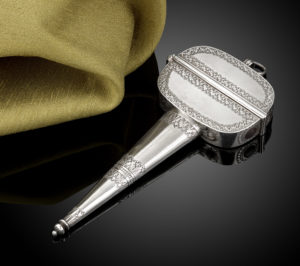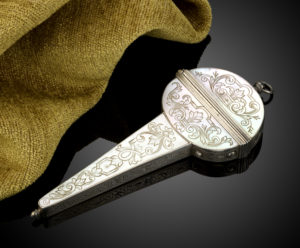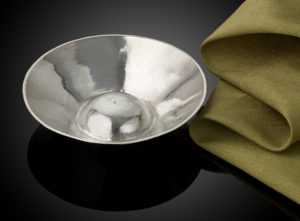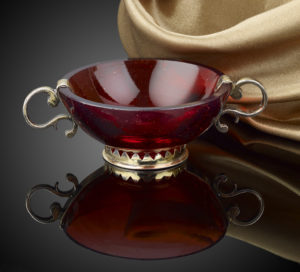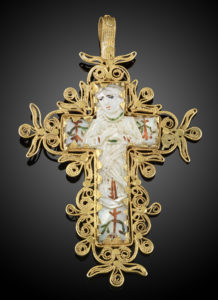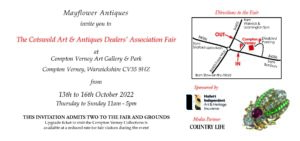
A rare oval ladies’ watch by David Bouquet 1, circa 1640, having a gilt-brass pre-spring verge movement with engraved pillars, gut line fusee and worm and wheel set up. An oval dial set with octagonal gold mount decorated with enamel tulips and butterflies amongst colourful leaves.
It was exciting to read about an Important Charles I Period Verge Watch London, made by Huguenot maker David Bouquet I, which is currently on the market courtesy of Mayflower Antiques – https://mayflower-antiques.co.uk/product/important-charles-i-period-verge-watch/ . This miniature masterpiece measures just 46mm in length, including the pendant and is 24mm wide.
Very few watches of this period have survived, and of those that have, most have had their original movement removed or replaced by a later one.
Even though the rock crystal case has been knocked, the watch is in remarkable condition, given the age and delicacy. It would have been worn on a chain hung round the neck. In the early development of watches such an item would not have been particularly efficient, needing winding twice a day to maintain accuracy to within about ten minutes.
By the beginning of the 17th century there were a number of foreign clock and watchmakers working just outside the control of the City of London, particularly in the area of Blackfriars, one of the so-called ‘liberties’. Many of these were Huguenot refugees from France who were particularly skilled in the art of engraving, enamelling and lapidary work.
Their existence so near the City had a significant impact on the established clock and watchmaking trade. In 1622 a petition was raised by a group of watchmakers in the Blacksmith’s Company and was sent to King James I in an attempt to prevent them trading and requesting the establishment of a Livery Company for the Clock and Watchmakers of London.
The first record of David Bouquet is in this petition where he is referred to as ‘David Bowkett at Mr. Samsom’s house with two apprentices’ and living in Blackfriars.
Bouquet became a Freeman of the Blacksmith’s Company in June 1628 and subscribed an unspecified sum towards the incorporation of the Clockmaker’s Company in 1630 (as Mr Bucket) later being made a Free Brother of that Company in 1632 and in which he became an Assistant from 1634.
He was a prominent member of the Huguenot church and served as a warden at the French Church in Threadneedle Street for four periods of three years each between 1637 and 1662. He had three sons. David and Solomon, who both became watchmakers, and Hector who was apprenticed to the diamond cutter Isaac Merbert. Bouquet continued to run a prolific workshop in Blackfriars with numerous apprentices until the year of his death, occurring in 1665, a year before the Great Fire of London.
Learn more about Huguenot contributions to London clockmaking at Clocktime Digital Museum – https://clocktime.co.uk/stories/huguenot-makers-london
As you can see, we wish to spread the message about Clocktime to as many individuals as possible throughout the globe. Please feel free to forward this message to friends, family and contacts who you think will find it of interest. Thank you in advance for your kind support.
Published by Famous Publicity – https://famouspublicity.com/


